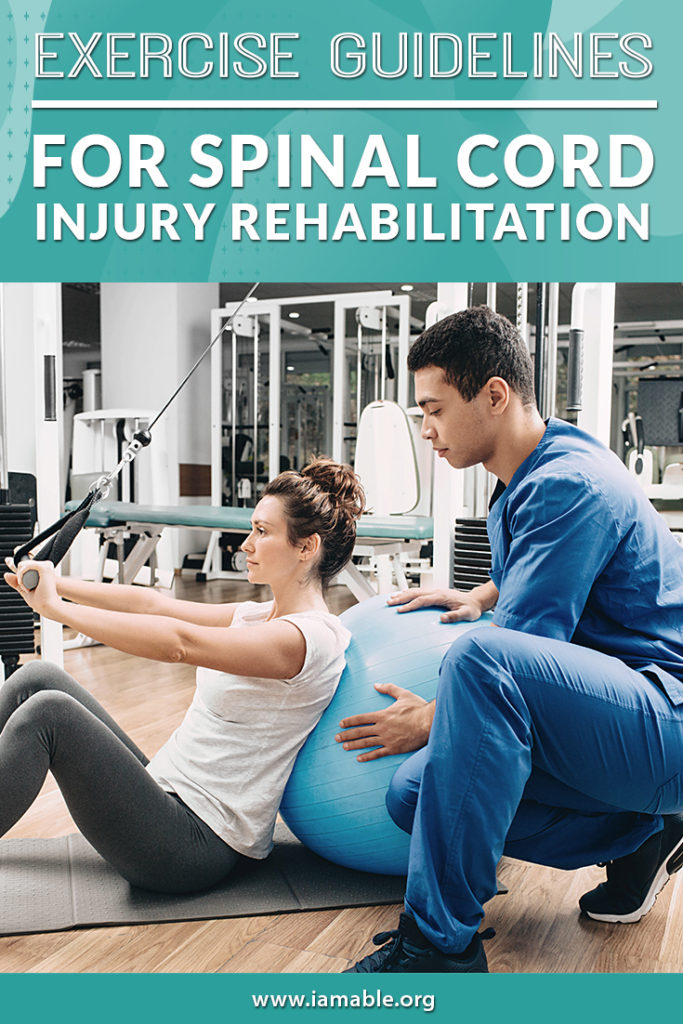Miami, FL 33186

If you are an SCI survivor, then you are either already in spinal cord injury rehabilitation or are about to begin. This can be a long and sometimes frustrating journey. However, it is crucial if you are going to regain as much of your independence as possible. Recent guidelines regarding spinal cord exercise following an SCI may help rehabilitation centers to provide you with the best treatment. Here are a few things you should know.
When you read diet and nutrition guides, you probably find them based on a 2,000 calorie per day diet. However, if you cannot activate half or more of your body, you won’t be using as many calories. Therefore, the benchmark for persons living with paralysis is different.
If you have paraplegia, doctors now recommended that you cut back your diet to 1,500 calories per day. The recommended figure is 1,250 calories per day for people with quadriplegia. While this reduced caloric intake compensates for less muscle use, that doesn’t mean you should stop exercising. Here are some of the things you should know about spinal cord exercise in the wake of a severe accident or injury.
Two Universities got together to do the scientific research needed. Researchers from Loughborough University in the UK and the University of British Columbia in Canada partnered up. The two teams spent almost a year and a half collaborating with various professionals (both individuals and organizations) around the world to learn as much as they could about spinal cord injury rehabilitation and what proves the most beneficial for patients.
The idea was to collaborate on a consensus of the best spinal cord exercises in order to produce a set of guidelines for health care facilities and practitioners to use. A number of nonprofits that are globally known for the work they do with SCI survivors shared in the project, including the Peter Harrison Centre for Disability Sport in the UK as well as the Rick Hansen Institute in Canada.
While the results of the research are not shocking by any means, it is undoubtedly appreciated to finally have a definitive study on the matter after more than 150 years of modern medicine with no defined guidelines. What did the researchers determine?
The guidelines considered the minimum thresholds to get the desired results for patients. Therefore, researchers studied both aerobic and strength training exercises. In the end, they determined that SCI rehabilitation patients need a minimum of 30 minutes of aerobic training at least twice per week. They also realized that strength training should be performed a minimum of twice per week, with patients performing three sets of each exercise.
Of course, these are merely minimum guidelines, and the benefits improve when vigorous activity is performed more frequently. For example, some of the benefits dramatically improved by increasing the number of vigorous aerobic exercise days to a minimum of three times per week instead of two. In fact, a half an hour of strenuous activity, performed three to five times per week, is optimal for heart health.
What are the benefits that spinal cord injury rehabilitation patients can achieve when you adhere to the recommended guidelines?
Many benefits come from having a regular exercise routine following a spinal cord injury. The study that set the guidelines focused on two benefits in particular.
Of course, there are many other benefits of exercise. That includes training as a part of spinal cord injury rehabilitation. For example, by increasing your functional strength, you increase the number of tasks that you can perform on your own. You can also improve your endurance, allowing you to sustain activities for a more extended period of time.
Finally, exercise may be your best chance at increasing the amount of mobility that you regain. While you can’t exercise non-functioning muscles on your own, electronic stimulation and gait training with Lokomat therapy can help. These therapies work the muscles that you don’t have the ability to activate on your own. These are a couple of reasons that you need to find a technologically advanced spinal cord rehabilitation injury center like iAM ABLE.
From physical therapy to modern technology, iAM ABLE has all of the treatment options you need following a spinal cord injury in southern Florida. We also offer an eBook that can help SCI patients wherever you may live. The title is 7 Unbelievably Important Steps to Take to Thrive after Paralysis.
Whether you are just getting started on your spinal cord injury rehabilitation or you are well into the journey, this book can help you to accept your new reality, make adjustments, and live your life to the fullest. Get control over your new circumstances rather than letting them control you. The help you need is here in the eBook and at iAM ABLE.
Grab our free e-book 7 Unbelievably Important Steps to Take to THRIVE after Paralysis by clicking the image below.
